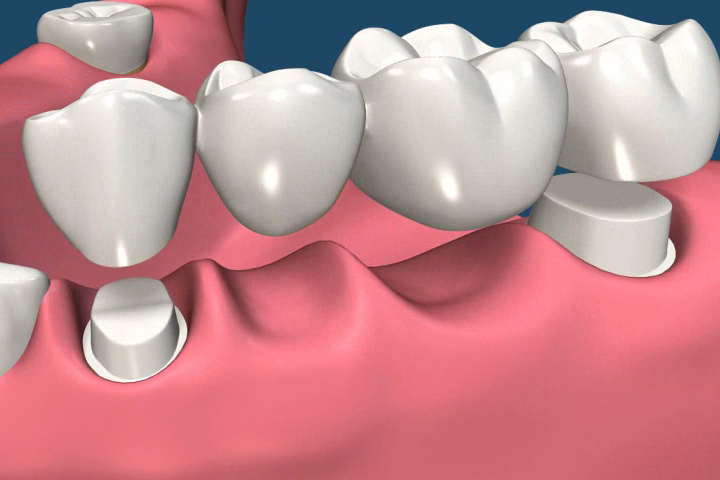Crowns and Bridges- Restructure and Restore Your Smile

Both crowns and most bridges are fixed restoration prosthetic materials. Whereas, removable devices such as dentures, can be taken out and cleaned daily. Crowns and bridges are cemented over existing teeth or implants, and can only be removed by a dental professional.

As the name suggests “Crown” meaning cap, in dental terms it means covering a tooth. The purpose of using crown is to restore and strengthen the teeth when it gets discoloured, cracked or broken. Dental Crowns are mostly recommended for teeth with worn fillings, cracks, large cavities, or other damage.
Dental crowns are either made of metal, porcelain, or a combination of both. However, porcelain crowns are considered the most natural looking when compared to the metal crowns. Beyond strengthening and realigning a damaged tooth, a crown can be used to improve the appearance, shape or alignment.
To prepare your tooth for a dental crown treatment, your dentist will first remove and treat the tooth that has been decayed or infected. The dentist will then take an impression of your tooth. The impression is sent to the laboratory where professionally trained technicians will create your new custom crown. For porcelain crowns, the dentist will carefully match the color of the new crown to the color of your natural teeth. This assures that your results are as natural looking as possible. There are few instances where the dentist will ask you to see the lab technician so that the shade of the crown can be customized.
Other materials that can be used as dental crown, includes gold and metal alloys, acrylic and ceramic. These alloys are more durable than porcelain and may be recommended for back teeth. Porcelain bonded to a metal shell is often used because it is both sustainable and attractive.
Your dentist may recommend a Dental crown treatment to:
A Dental bridge treatment may be recommended if you have one or more teeth missing. Dental bridge are ceramic structures, spanning the gaps left by a missing or implanted teeth/tooth. A ceramic tooth called pontic is fused between two or more porcelain crowns on either side of the missing tooth that serve as anchors.The Gaps left by missing teeth eventually cause the remaining teeth to shift or rotate into the empty spaces that eventually results in a bad bite. The imbalance caused by missing tooth/teeth can lead to gum disease and can also cause temporomandibular joint (TMJ) disorders.
Dental Bridges are used to restore one or more missing teeth. A dental bridge span space where the tooth is missing. Dental bridges are cemented over the natural teeth or implants surrounding the space. These teeth are called as abutments that serve as anchors for the bridge. A replacement tooth is called a pontic which is attached to the crowns that cover the abutments. As in the case of crowns, you have a choice of materials for bridges too. Your dentist helps you decide which to use, based on the location of the missing tooth/teeth, its function, aesthetic considerations, and cost. Mostly porcelain or ceramic bridges are used as they can be easily matched to the color of your natural teeth.
While dental crowns and bridges can last a lifetime, at times they tend to get loose or fall out. The most important measure you can take to ensure the longevity of your dental crown or bridge is to practice good oral hygiene. A dental bridge can lose support if the teeth or bone holding it in place is weakened by any dental disease. Always keep your gums and teeth healthy by brushing and flossing with fluoride toothpaste twice a day. Also visit dentist and hygienist regularly for checkups and professional cleanings.
